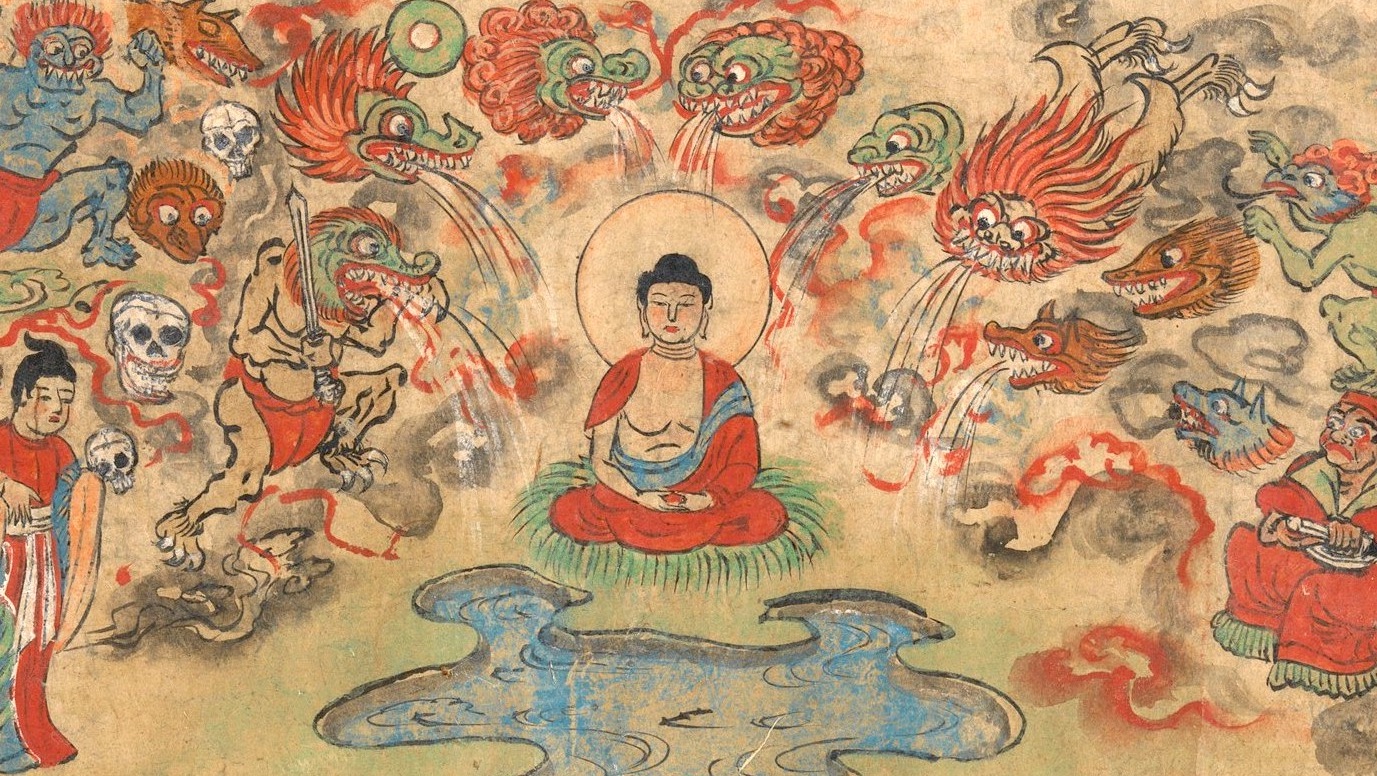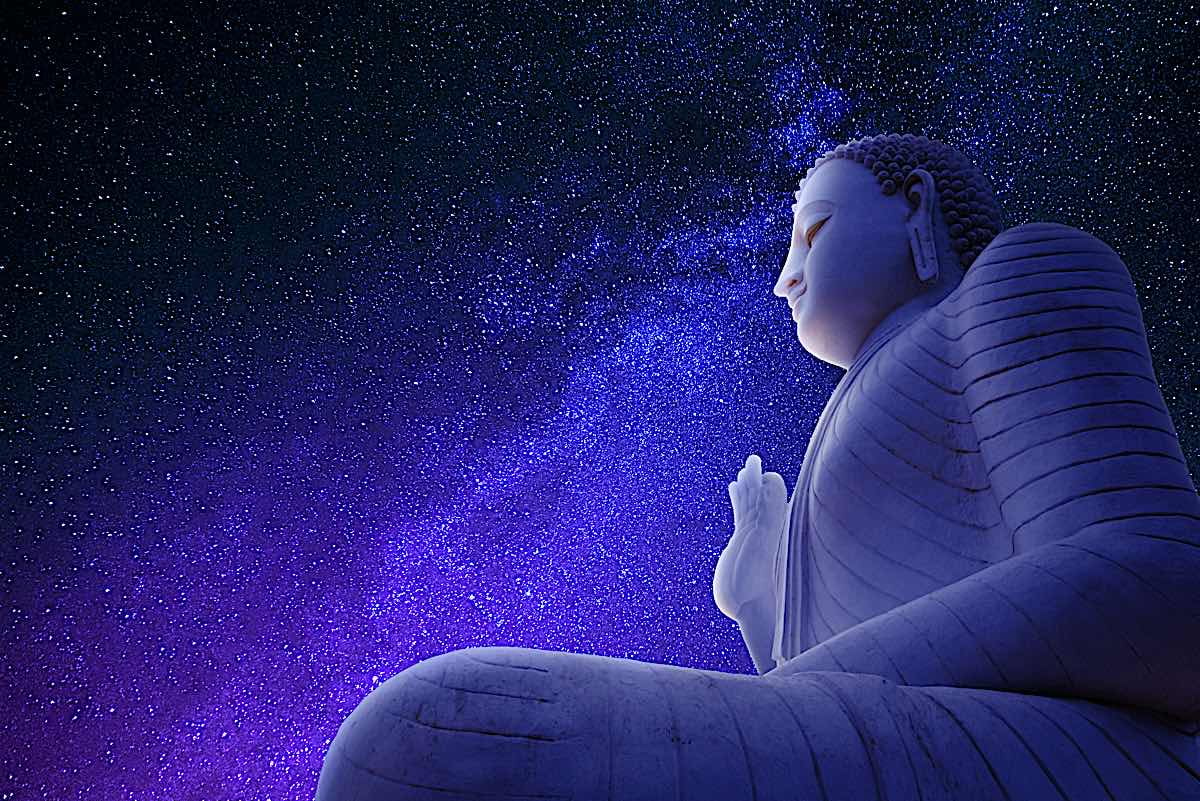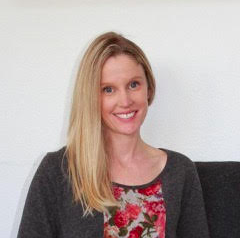The Demon World
Mythological understandings of meditation may seem irrelevant today, but they’re part of the tradition for a reason The post The Demon World appeared first on Tricycle: The Buddhist Review.

 The Buddha resisting the demons of Mara as they try to distract him from meditation. Scene from the Illustrated Sutra of Past and Present Karma | Courtesy the Metropolitan Museum of Art, Mary Griggs Burke Collection, gift of the Mary and Jackson Burke Foundation, 2015
The Buddha resisting the demons of Mara as they try to distract him from meditation. Scene from the Illustrated Sutra of Past and Present Karma | Courtesy the Metropolitan Museum of Art, Mary Griggs Burke Collection, gift of the Mary and Jackson Burke Foundation, 2015Nearly everybody I know who’s practiced long enough has had times where they’ve gone through a really dark patch in their meditation. Having come through that, you know how you dealt with it. And you presumably had a teacher you could consult about it. So you have a sense of how to talk another person through it because you’ve experienced that from the side of the person freaking out.
There are traditional ways of understanding these kinds of experiences—all that cosmology and all those heaven and hell realms and that sort of stuff. These days lots of people pooh-pooh that stuff because it sounds like superstition. And we don’t want superstition anymore! We want science!
But cosmology and so forth is a mythological way of expressing the kinds of things a person encounters in a meditation practice. Even if you don’t take it literally, you can still use the mythology of hell realms as a way to understand what you might be going through when you hit one of these rough patches. When you’ve got some sort of framework for understanding this kind of experience. it doesn’t feel as scary or as potentially permanent. On the other hand, if you think that the only explanation for what you’re experiencing is that you’re going insane, that can be a lot scarier than the idea that you’re temporarily entering a so-called hell realm that lots of other people—including your teacher—have experienced and have come through just fine.
Magazines like Harper’s or the Atlantic Monthly, which published an article about the dangers of meditation a few years ago, love the story of the person who, the very first time they meditate, has a complete crack-up and ends up going psychotic. But that’s not a very common story. The more common story is the one where meditation is just so boring and uneventful that the person gives up on it. If you get through the boring part and still keep doing it, it’s pretty likely that you’ll also have been steeped in the mythological traditions surrounding meditation.
That stuff is not there to try to make you believe in ghosts and supernatural beings. It’s there as a part of the 2,500 years of research and development of this practice. People have been experiencing this kind of thing and working out how they and others can deal with it for a very long time. It’s a shame to ignore all their efforts just because it doesn’t sound like “science.”
Willoughby Britton, a professor of psychiatry and human behavior at Brown University and a prominent researcher into the dangers of meditation, says, “The science of meditation is pretty much exclusively focused on the positive effects of meditation, but if we want to understand the entire trajectory of the contemplative path and everything that it entails we need to be more even-handed and more balanced in our investigations and begin to investigate the full range of experiences including the ones that would be considered negative, difficult, challenging, or maybe even problematic.”
I totally agree. But the “science” she is referring to is contemporary Western psychology and psychiatry, much of it driven by commercial interests. Western psychology and psychiatry are useful in a lot of areas. Westerners in general haven’t had much experience with meditation the way that the cultures from which traditions like Buddhism derive have.
People often want me to sell them on the benefits of meditation. I hate doing that because I think it’s usually better not to talk too much about the benefits at the outset. Just do it for a while. See the benefits for yourself. Don’t come in with expectations, especially grandiose ones that you might be inclined to push yourself hard to fulfill. When people asked him about the benefits of zazen, Kodo Sawaki said, “Zazen is good for nothing!”
I know that’s a hard sell. But the people who are selling folks on the benefits of meditation are probably not doing them any favors by downplaying or even denying that there can be serious challenges.
One way of understanding these challenges is the concept of makyo. It’s a Japanese word that means something like “world of demons.” I got introduced to this idea very early on in my Buddhist practice. I probably first encountered it in the book The Three Pillars of Zen by Philip Kapleau.
This idea of a world of demons doesn’t have to be taken literally, like there are literally demons in a world somewhere out in space, or underground, or wherever demons dwell. It’s a way to express the sort of phenomena that sometimes arise through Zen and other meditation practices. Maybe the best way to get into it is for me to tell you a little bit about my worst makyo experience.
Leading up to this experience were a number of other strange events. Things were getting weird for me. I was living in Japan and doing a lot of zazen, but I didn’t have a good strong connection with Nishijima Roshi yet and my first teacher was far away in America. This was before the internet made communicating with people overseas easy and cheap.
Anyway, things were getting strange for me psychologically. It was probably a combination of a lot of things besides just zazen. I was living in a foreign country. I could barely speak the language. I didn’t have a lot of friends. In fact, I didn’t have anyone in my life at the time who was both a friend and a native speaker of English. So even among the friends I did have, there was always a communication barrier.
As a result of all this my worldview was starting to fall apart. The understanding that I had up until then of who I was and what the world I lived in was starting to crumble. This is not an uncommon thing for Zen practitioners. But I want to emphasize that this is not something that usually happens at the beginning of zazen practice. In the beginning it’s mainly just tedious. My circumstances were unusual, and that led to an acceleration of the process I was going through.
I remember being on a commuter train in Tokyo, probably the Odakyu Express going to work at Tsubaraya Productions, and just feeling like this wasn’t reality anymore. At least it wasn’t reality the way I understood it. I felt like my life was sort of a dream and that reality was something entirely different.
Fast-forwarding a bit, I attended one of Nishijima Roshi’s summer retreats at Tokei-in temple in Shizuoka, where Mount Fuji is. This wasn’t my first retreat, or my second. I’m not sure which one it was. But I’d been going to these retreats for a few years. I was probably having a rough time in zazen that day, although I don’t particularly remember. It’s just that I remember a lot of rough times in zazen at Tokei-in temple. It was hard to get through. Stuff was always coming up in my mind that I didn’t like.
But it really hit that night. It was the first or second night of the retreat. We all slept in this one fairly large room with tatami mats on the floor. The women would sleep in one room, and the men would sleep in another. So I was in the room where the men slept, and I woke up in the middle of the night from a horrifying nightmare. I don’t remember exactly what the nightmare was about, but I remember my stomach was doing flip-flops. I could feel it right in my gut.
I woke up in total terror. It was as if every fear that I’d ever had in my life had come all at once. I’ve never felt terror like that before or since. People who’ve heard this same story have said I had a panic attack. I’ve never had a panic attack—at least not anything any psychiatric professional has diagnosed and labeled as such—but this felt like something more than the phrase “panic attack” can encompass. This was a sense of heavy, saturated, total fear.
I was rational enough that when I looked around the room and everybody was asleep I realized there was nothing for me to be scared of. Yet even so, I was in total, absolute, utter terror.
I didn’t know any of the people at the retreat very well. They weren’t complete strangers, mind you. I knew their names and had been on retreats with some of them before, but I didn’t know them well enough to wake any of them up in the middle of the night saying, “I’m scared! Read me a bedtime story!” Especially when we all had to get up at four the next morning.
One thing I’d started doing when I went on these retreats was to bring some magazine or book or something with me that had nothing to do with Zen. I did this because I’d already had a couple of little minor freak-outs before. It seemed like it helped in those situations to distract myself with something that wasn’t the least bit “spiritual.”
So I went and got my backpack in which I had a copy of Fortean Times. It’s a magazine that looks at unusual phenomena like UFOs and werewolves and whatever in a rational and scientific way but doesn’t necessarily try to debunk them. It’s pretty fun.
I went to the hondo, which is the Buddha Hall, the main area in the temple where the buddha statue is, because they kept the lights on there all night. So I went in there and I was just looking at my magazine. Actually, I was not even really reading the magazine but just using it as something to distract me and calm me down. I don’t know how long I sat out there with that magazine, but eventually I got settled enough that I wasn’t feeling a big adrenaline rush and total fear. I went back to the room where everyone was sleeping and somehow managed to go to sleep.
At four the next morning I got up with everyone else and did my zazen. There was this interesting moment, though, during one of Nishijima Roshi’s lectures that day. Somebody asked him a question, which I don’t remember. But Nishijima Roshi answered the question by saying, “Just don’t drink alcohol.”
And when he said “Just don’t drink alcohol” he was making eye contact directly with me. At that moment I understood my problem completely. It wasn’t that I had a drinking problem. I don’t drink alcohol. It wasn’t about alcohol at all. It was about the kind of delusions that I was putting into my head around that time. These delusions were my demon world.
The deal with makyo is that it’s very personal. Whatever the particular thing is that you think is the worst thing in the world, the thing that you’re protesting about, or writing tweets about, or saying how terrible it is that anybody would do this thing, whatever that thing is, it is part of you. And you crave that terrible thing just as much as any of the people you point fingers at for bringing that thing into the world. That’s what I discovered that night. It was heavy and it was difficult.
But there’s an upside to this. Having gone through that, there’s not much anybody else can say or do that could be worse than what I now know to be part of myself. That doesn’t make me completely immune to ever freaking out again. But it takes a lot more to fluster me now than it did before.
I did initially make the mistake of thinking I was absolutely beyond the point of being rattled by anything. That seems to be a common mistake. But I think if you’re honest with yourself, you’ll see that there are still things that can set you off. Even so, it’s nice to get past some of the stuff that used to really wind me up and be able to keep making progress so that fewer things are able to get to me.
Getting back to that Harper’s magazine story about Megan and how she committed suicide after a meditation retreat, I would guess that what she encountered was something like what I did—the unmistakable understanding that whatever she hated the most about humanity was part of her. Without the proper training to know that whatever that was, such an encounter could be psychologically devastating. I can see why someone would want to commit suicide after having the sort of experience I had. If I had thought that stuff in my head was me, then I might have decided I’d better kill myself for the good of the world.
Under most circumstances this kind of makyo experience is not going to happen to you on the first day, or the first month, or the first year, or probably even the first decade of your practice, as long as you take it slow and don’t get ambitious about achieving something through meditation.
If you somehow get involved with a teacher or organization that encourages you to have altered states of consciousness or reach some kind of “higher level of awareness” or whatever, my advice would be to say sayonara and look for somebody else. You can find a teacher who’s more sensible than that if you look around. Those ambitious meditation practices that get you to have these big experiences real fast are the only ones that are truly dangerous.
On the other hand, if you acclimate yourself slowly to the understanding that your practice helps you develop, you’ll be okay. The reason things go wrong sometimes is that we’ve lived our whole lives with one way of understanding life, the universe, and everything, and we’ve gotten comfortable with that. But what the Buddhist teachers will tell you is that the thing most of us think of as normal life is a kind of deep mass hallucination that almost everyone in the world is partaking in. Getting into a better, more realistic understanding of how things really are is like being talked out of a bad acid trip. You have to take it slowly, or you’ll just end up making things worse.
♦
Excerpted from the book The Other Side of Nothing: The Zen Ethics of Time, Space, and Being. Copyright ©2022 by Brad Warner. Printed with permission from New World Library.

Get Daily Dharma in your email
Start your day with a fresh perspective

Explore timeless teachings through modern methods.
With Stephen Batchelor, Sharon Salzberg, Andrew Olendzki, and more
![]()
Thank you for subscribing to Tricycle! As a nonprofit, we depend on readers like you to keep Buddhist teachings and practices widely available.
This article is only for Subscribers!
Subscribe now to read this article and get immediate access to everything else.
Already a subscriber? Log in.

 Aliver
Aliver 





























.jpg)


